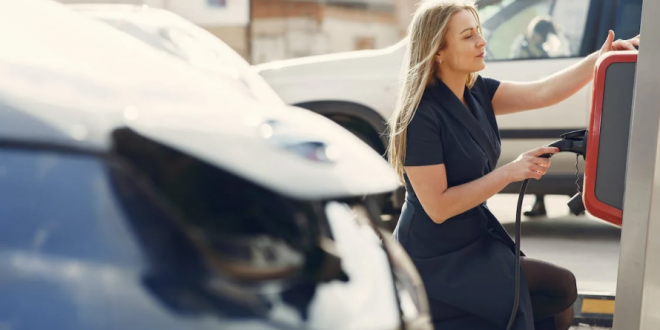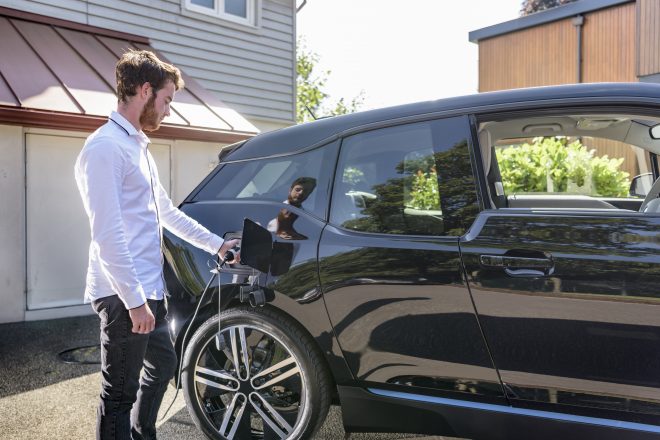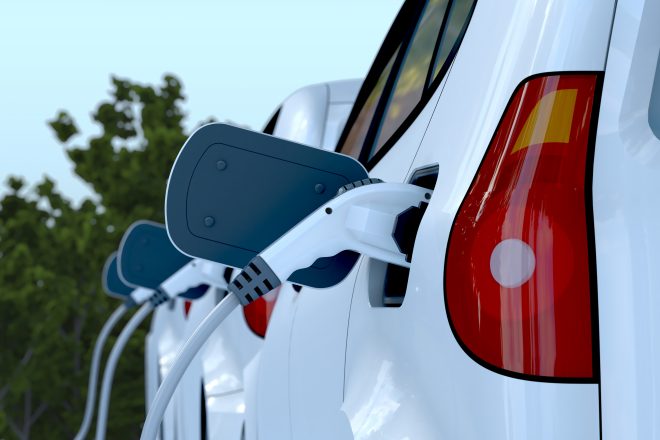Two-Way Charging: the EV as a link in a greener and smarter energy grid
X minutes reading time
Instead of just allowing power to flow from the grid to the car, two-way charging can also deliver power from the car to the outside. This turns the EV into a kind of driving battery. You can read more about this smart and green development in this article.

The benefits of two-way charging
Two-way charging allows the electricity in the car to be used for different purposes. It provides the ability to connect external devices such as an e-bike, laptop or cooler directly to the car.
This is especially useful on the go or in situations where there is no direct access to an electrical outlet. The first cars to offer this functionality include the Hyundai Ioniq 5 and 6 and the KIA EV6 and Niro Electric, which are equipped with this so-called Vehicle-to-Load (V2L) technology.
The evolution to V2X (Vehicle-to-Everything)
V2L is only the first step toward a much broader two-way charging concept: Vehicle-to-Everything (V2X). With this, two other abbreviations make their first appearances: Vehicle-to-Grid (V2G) and Vehicle-to-Home (V2H). V2G refers to an EV’s ability to feed electricity back into the grid, while V2H refers to using the car as a power source for the home.
The Role of Vehicle-to-Grid (V2G)
An electric car can (re)supply additional power to the grid via V2G. This reduces the burden on traditional energy sources. This can help reduce peak load on the power grid and reduce reliance on non-renewable energy sources.
At the moment, the way it already works is that a provider of (public) charging points can dispense (extra) electricity to electric cars if there’s too much power on the grid or, conversely, charge less (quickly) if there’s not enough power.
V2G also makes it possible the other way around. For example, an energy supplier can pay a charging point and EV owner to have power from the electric car fed back into the grid at these peak times when there is an energy shortage.
The benefits of Vehicle-to-Home (V2H).
V2H uses the electric car as a kind of home battery. For example, during peak times, when electricity prices are high, and the grid is overloaded, the car can supply power to the house. Dynamic energy contracts allow EV users to choose the hours when electricity is green and cheap. This makes it possible to save on home charging costs and relieve some of the pressure on the electricity grid.
And there are more benefits. It will be easier to drive on green-generated energy and power your home with green electricity. You can charge green power directly from your own solar panels to your EV, using renewable energy sources and reducing your carbon footprint. Moreover, suppose you generate more electricity than you consume and are eventually no longer allowed to use net metering. In that case, using your electric car as a home battery also becomes very financially interesting.
This way, you contribute to more sustainable mobility, a reduction in dependence on fossil fuels, and you can also benefit financially.
Challenges and prospects
Although two-way charging is promising, there are still some challenges to overcome. Currently, most “electric” cars are not suitable for V2X applications because they are primarily designed for unidirectional charging. This means that the power supplied from the car to the grid must be converted from direct to alternating current. In addition, the development of the necessary charging infrastructure, such as charging points that support two-way charging, is still in its infancy. These factors contribute to the current high cost of V2X-related technologies.
The outlook is positive. As the technology evolves and more EV models are developed with V2X capabilities, two-way charging is expected to become more widely available and affordable. This opens the door to a more decentralised and resilient energy system in which electric cars play an active role in the energy transition.


